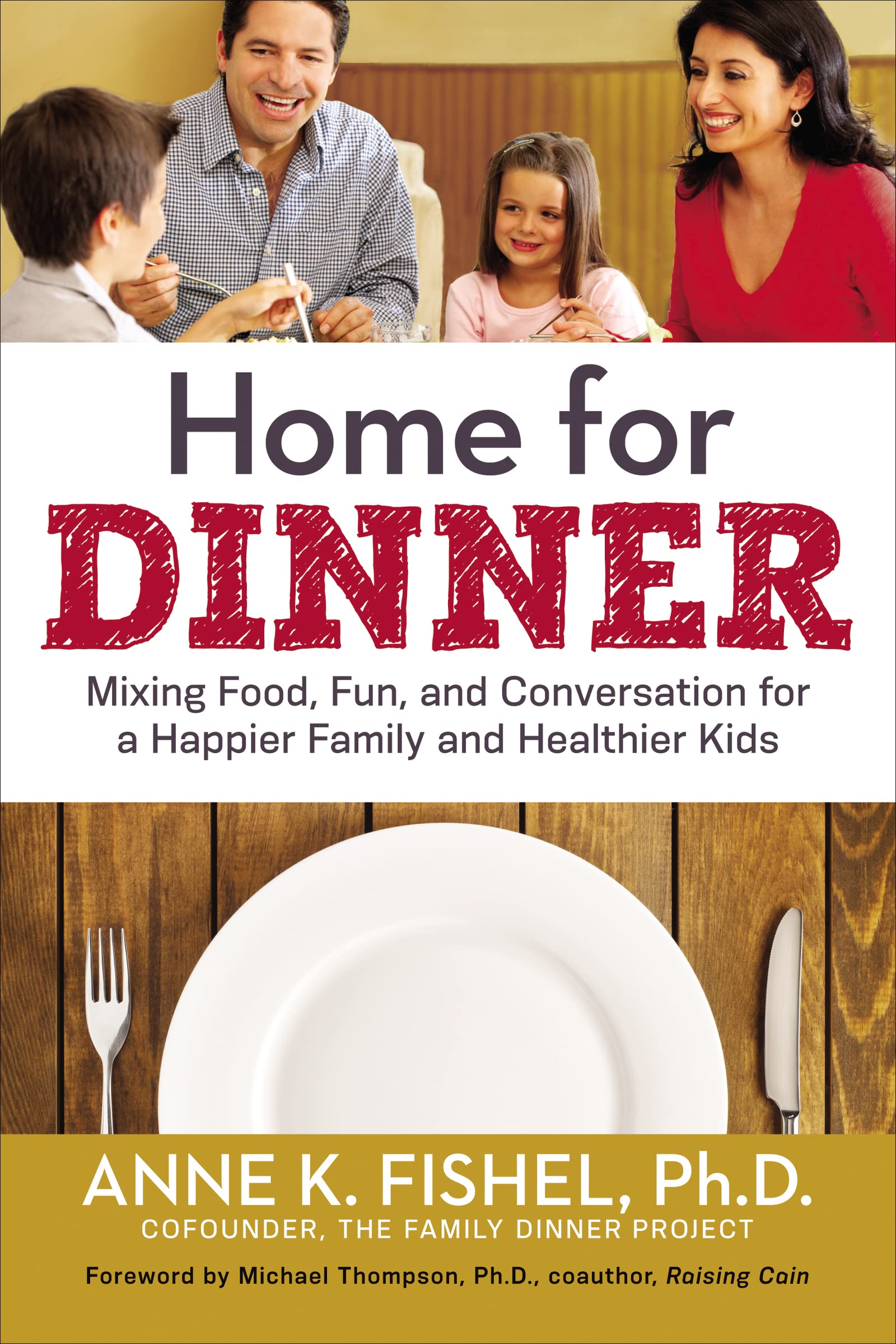IT WAS A DARK, COLD, MINNESOTA NIGHT.
My mom was visiting from Wisconsin, and we were working in the kitchen, preparing supper. Looking at the clock, I suddenly realized I’d forgotten about my 4-year-old’s dance class, which was about to start.
My heart rate jumped as I zipped around getting her bag ready and telling her we needed to get out the door, like NOW. I looked longingly into the kitchen, my mom stirring at the stove, my husband lounging on a chair at the kitchen island and our 6-month-old son in his bouncy seat.
My train of thought did a U-turn. Why on earth would I leave our warm cozy home at this moment, when dinner is about to be ready?
I realized that staying home and eating together as a family was going to be much more fulfilling than rushing to make it to dance class. At that point, I made the split-second decision to stay home. That night we had a lovely family meal by candlelight.
Growing up with it
Eating together, sharing a meal, looking at each other, hearing each other speak and really being present at the table over nourishing food is one of the most wonderful ways to spend time as a family.
I grew up having family meals seven nights a week. While I didn’t appreciate it at the time — and certainly didn’t understand the impact it would have on me — I now recognize the value of the family meal. Unfortunately, while the family meal used to be commonplace, it seems to be more of a dwindling species these days.
Why eat together?
Why take the effort to organize and make the family meal happen?
Beyond the pleasure of spending time with loved ones, eating together also may lead to better health outcomes.
The idea that a family meal will promote more healthful habits for the family members is not only logical, but is also supported by research. A review paper by Dr. Jayne Fulkerson at the University of Minnesota, published in the Journal of Nutrition Education and Behavior in 2014, showed that kids from families who ate more meals together were more stable and successful and had reduced risk for chronic disease.
Fulkerson and her team conducted a more recent study on the impact of a community-based family meal program on health outcomes. The study design and early findings were presented at a meeting I recently attended for nutrition professionals.
Sharing meals and preparing food together had a positive impact on the families: Almost 75 percent of the participating kids reported that the program increased their willingness to eat fruits, vegetables and healthier snacks — and their desire to try new foods.
Previous studies published by Fulkerson, including one in 2009 in the Journal of Adolescent Health, found that the more meals adolescents shared with the family, the more fruit they consumed, the more likely they were to eat breakfast — and the less likely they were to be depressed.
Also, adolescents who never ate with their families were almost three times more likely to be overweight.
Of course, making the family meal happen, especially if it’s not already happening, takes effort.
Busy schedules, bringing home a new baby and rebellious teenagers — or family unions or separations — challenge the family meal.
But I believe these are benefits well worth pursuing. Plus, just think of the extra family time you’ll enjoy, regardless.
How to host a meaningful meal
Ready to implement the family meal — or perhaps step up your approach? Here’s how:
Who and what: A gathering of family members (no less than two) in which food is consumed in a meaningful way. Devices are turned off and there’s a deliberate sense of togetherness.
Why: Eating a meal together as a family is a ritual that fosters health and relationships. The family meal is an opportunity to take pause from the daily hubbub and connect with your loved ones. Generally, people who participate in family meals are healthier than those who don’t.
Where: The family meal can be anywhere, but typically it’s in the family home at a designated eating spot. Sitting, rather than standing, is an important component and signifies that the meal is an event.
When: Generally the family meal occurs at breakfast, lunch and/or dinner — whenever those designated meal times are in your home. Rarely does a family get to sit together for every meal of every day of the week. Depending on the family, setting a goal of a family meal three to five nights a week might be reasonable, with specific designated mornings or nights.
How: Setting goals and identifying days and times for the family meal will improve success. Make it clear that family members are expected to join (without devices) and maybe contribute (food, setting the table or cleaning up). Plan menus ahead of time to ease stress, or make sure to have a well-stocked pantry. The food itself, however, is less important than the fact that family members are joining together. The meal can be anything — sandwiches, leftovers, eggs, a new recipe or an old standby family favorite. Lighting a candle, giving thanks or performing another preferred ritual, however small or large, helps to emphasize the “event” of the meal. Finally, relax and enjoy the togetherness and the sense that everything else can wait.
This book — subtitled Mixing Food, Fun and Conversation for a Happier Family and Healthier Kids — comes from Harvard Medical School professor and mother Anne Fishel, the cofounder of The Family Dinner Project, a nonprofit Harvard University based project that encourages family mealtimes. Fishel explains how to whip up quick, healthy, tasty dinners; get kids to lend a
hand (without any grief); adapt meals to the needs of everyone — from toddlers to teens; inspire picky eaters to explore new foods; and how to keep dinnertime conversation stimulating, fun and tension free. She even touches on ways to explore other cultures and spark curiosity about the world.
Megan Baumler is a mother of two and a registered dietitian with a doctorate in nutrition. She lives in White Bear Lake. She teaches family cooking classes in collaboration with BearPower, a community movement helping families eat well and be active. Learn more at bearpower.org.
Minnesota Parent may earn a small commission for any affiliate links to any products or services from this website.


















